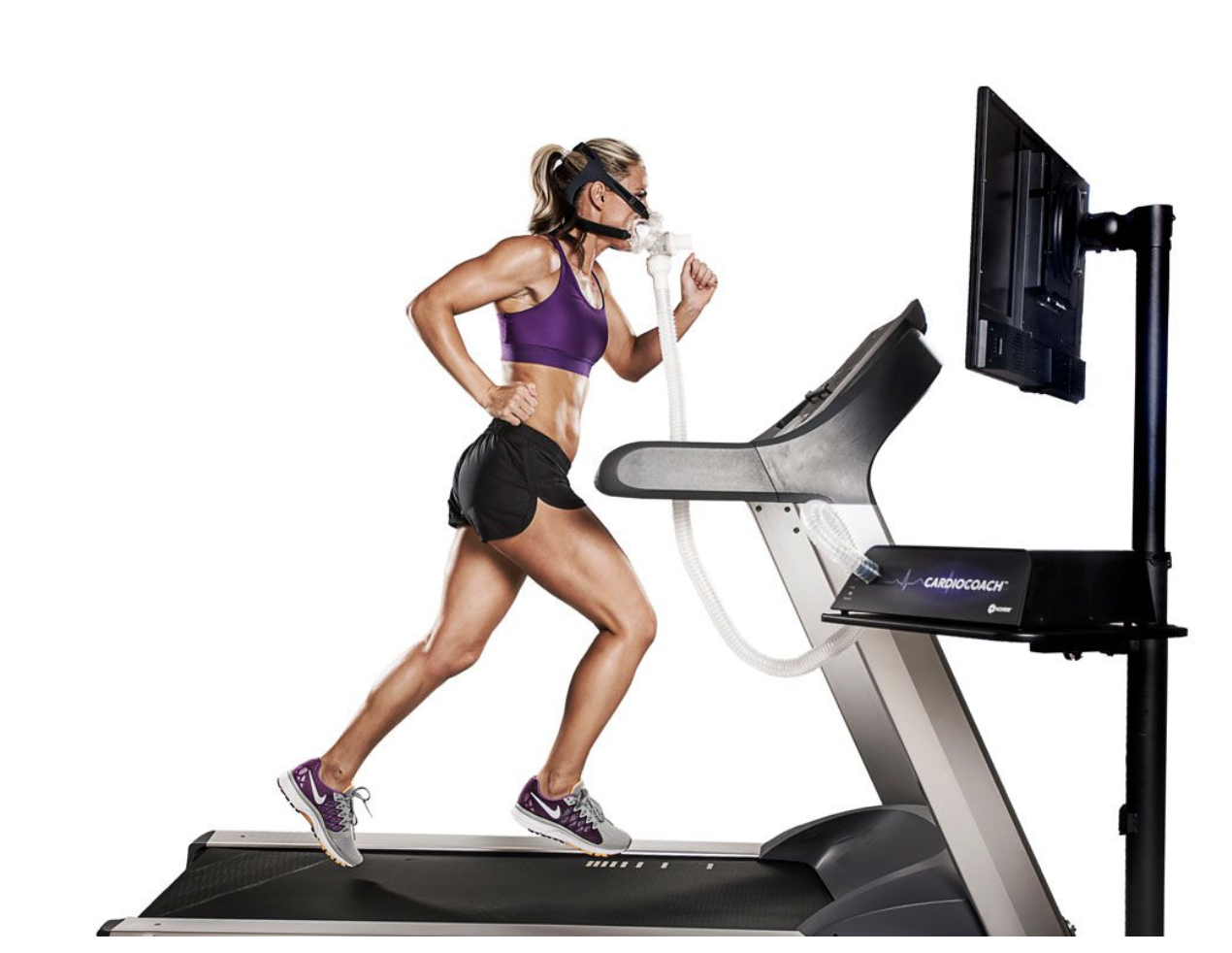Jump Ahead To:
Toggle(Mis) Understanding max VO2
Maximal oxygen uptake has taken on an importance in training for endurance out of all proportion to its usefulness and original purpose. As a result, it has an undeserved status in the hierarchy of training principles that arise from misunderstanding. In this article, I will discuss in detail why this has happened and why it has led so many coaches and athletes down a blind alley.
History
To do the subject of maxVO2 justice, we must look at some history and theories of fatigue and limitations to human performance.
Science, to be “sciencey,” needs to measure stuff. Often, when a new method of measuring comes along, the quantity being measured takes on an undue significance. In 1923 two British exercise science pioneers, A.V. Hill and H. Lupton, as a result of experiments on Hill himself, concluded that there was an upper limit to the oxygen uptake rate during exercise. They wrongly postulated that 4 liters/min was the maximum O2 uptake possible in humans.

Their findings immediately gained traction partly because of Hill’s credibility in the field. He had already received the Nobel Prize in medicine in 1922 for his work on heat production in muscles. Their conclusion that the cardiovascular and respiratory system limited the maximum oxygen uptake (maxVO2 or VO2 max) has held sway over much of exercise science ever since. In the intervening 100 years, maxVO2 has come to be wrongly equated with maximum power output. This has led to the misunderstanding that maxVO2 is a single number that explains endurance performance.
The disconnect between maxVO2 and its relevance to endurance performance led Tim Noakes to propose a broad model of endurance called the Central Governor Model in 1997. The CGM restated Hill’s hypothesis about what limited human endurance performance. Hill was left with unanswered questions after his experiments on himself and said this in 1924:
The heart is able to regulate its output, to some extent, in accordance with the degree of saturation [of oxygen] of the arterial blood … we suggest that in the body (either in the heart muscle itself or in the nervous system) there is some mechanism which causes a slowing of the circulation as soon as a serious degree of unsaturation occurs, and vice versa. This mechanism would tend, to some degree, to act as a ‘governor,’ maintaining a reasonably high degree of saturation of the blood: the breathing of a gas mixture rich in oxygen would produce a greater degree of saturation of the blood and so allow the output to increase until the ‘governor’ stopped it again. We realize the danger of a hypothesis partly suggested by teleological reasoning: in this case, however, we can see no other explanation of our experimental results.
Noakes summarizes his CGM this way:
During maximum exercise performance, the heart is the organ at greatest risk of developing an oxygen deficiency…..especially during vigorous exercise at extreme altitude. Thus a mechanism must exist to restrain over vigorous use of the exercising skeletal muscles which would imperil the heart. This model proposes a governor that monitors the state of oxygenation of the heart and perhaps other organs as well. When oxygenation of the blood in the coronary arteries approaches the limits of what is safe the brain’s motor cortex, which recruits the exercising muscles, is informed, and it stops recruiting additional muscle. As a result the following occurs:
- The body experiences fatigue and discomfort which is felt in muscles but sensed in the brain
- The work output of the muscles and the heart falls, which leads to a reduction in the oxygen demands of the heart, thereby protecting the more delicate heart from damage caused by oxygen starvation.
While no “governor” has been identified, this Hill/Noakes model does an excellent job of explaining the fatigue we experience with vigorous exercise. No matter the mechanism of fatigue, the result is always the same. The brain reduces the recruitment of muscle mass, resulting in reduced power output and a slowing which in turn reduces the sensation of fatigue.
Except in extremely rare cases, humans cannot override this unconscious effect, and in those cases, the athletes who manage to override the governor end up in the hospital. A famous case of this was called the Duel in the Sun at the 1982 Boston Marathon, where Alberto Salazar and Dick Beardsley hammered on each other so hard to the finish that they each ended up not just in a hospital but in the intensive care unit. Neither one of them ever ran as well again. You can override that governor but at your peril.
Cause and Effect

When exercise intensity increases due to more muscle mass being recruited by the brain’s motor cortex, more oxygen is demanded by those working muscles. This demand is met by increased cardiac output. Both the heart rate and the amount of blood pumped with every heartbeat increases. This happens up to the individual’s max VO2, which according to these models, is limited by the governor that protects the heart from becoming exhausted and failing.
The oxygen uptake (VO2) is a function of the athlete’s recruited muscle mass and work rate right up to the limit of max VO2. The maxVO2 is the RESULT, not the CAUSE, of the muscles’ maximum power. This is easily seen in well-trained Cross Country skiers who will achieve higher maxVO2 values in tests that allow the use of all four limbs, as they do in skiing, as compared to tests conducted running.
Restating this idea: The athlete’s muscle strength and fatigue resistance enable him or her to run faster. Those high speeds demand a high oxygen consumption rate (higher VO2). But, the high rate of O2 consumption does not create the ability to run fast. Rather, the high speeds demand a high max VO2 until the heart’s safe limit is reached.
Individuality
Not all humans have the same level of muscle contractility. Contractility refers to the force generated by the muscle fibers’ contraction. Those with superior athletic ability have skeletal and cardiac muscle with superior contractility. Those athletes can produce more powerful skeletal muscle contractions and, if properly trained to increase fatigue resistance, sustain that power for longer, increasing the oxygen demand. In elites, this results in a more efficient heart muscle with superior contractility able to produce a higher output of blood and oxygen before its dangerous limit is reached and the governor shuts things down.
Athletes with a large yet inefficient heart that consumes large amounts of oxygen may have high maxVO2 values. However, the energy cost of supplying that big heart is also high. The end result of the poor contractility of both cardiac and skeletal muscle can be a high maxVO2 value without a corresponding increase in endurance performance.
While these qualities are influenced by training, there is, no doubt, a significant genetic component to all these qualities affecting the athlete’s max VO2.
Training Implications
Athletes should train to become faster, not to increase the number in a laboratory test. If they can run faster for longer, their max VO2 may (or may not) increase, but that is a secondary result of much less importance than their increased speed.
We can make the athlete faster by increasing the distance traveled in each stride by developing more power in the propelling muscles. https://evokeendurance.com/why-even-ultra-runners-need-speed-work/
We can make the athlete able to sustain this increased stride length for longer by increasing the fatigue resistance of the propelling muscles. https://evokeendurance.com/muscular-endurance-all-you-need-to-know/
Read those last sentences again. In them lies the secret to improving endurance performance.
The first is a function of specific strength and power
The second is a function of the aerobic capacity
Sports science considers the triad of max VO2, speed at the measurable elements that combined, are the best indicators of endurance performance as arrived at through consensus in exercise science: maxVO2, speed at one’s anaerobic or lactate threshold, economy (oxygen cost) at that threshold, maxVO2 has, by far the least correlation with performance and is the least affected through training.
Often overlooked by those who advocate a focus on increasing max VO2 is that an untrained individual’s max VO2 is one of the first things to improve when an endurance training program is started. It is a first-wave response to training and typically peaks within 10-12 weeks of continuous training. Many studies that measure changes in max VO2 due to some training program often last only 6-12 weeks and use untrained subjects. Any training these subjects engage in is likely to improve their max VO2.
When it comes to well-trained endurance athletes, it is challenging to change the max VO2 at all and to do so by more than 5% is a near impossibility. In fact, many elite athletes see their maxVO2 decline over their careers even while seeing performance improvements. How could they improve performance when their max VO2 decreased if max VO2 was actually synonymous with endurance performance?
For those who remember something from your statistics class, the correlation between maxVO2 and performance (r2) is in the .6 to .7 range depending on the study. In various studies, the r2 for both speed at threshold and economy tends to be in the .8 to .9 range. That means that they are much more highly correlated with endurance performance than max VO2. The good news for all endurance athletes is that both these qualities are highly trainable and can be improved by double-digit percentages.
Real World Examples
The following examples may help explain my skepticism of the idea that training to increase max VO2 is the best route to improved endurance performance.
Case #1
My awakening that maxVO2 is not the holy grail of endurance performance happened at my own expense in my athletic career. Starting as a young swimmer, I had been tested for things like maxVO2, which was found to be a world-class value. You can imagine my disappointment when my performance didn’t match the expectations I had been led to believe would come with a high max VO2. I was good alright, but solidly second tier in swimming, running, and cross-country skiing. Only years later, when I understood more about the physiology of endurance and saw more and more examples of the disconnect between maxVO2 and performance, my understanding began to gel.
Case #2
A three-time Olympian and ten-year member of the U.S. Ski Team’s Cross Country World Cup squad was cut from the team for lack of performance and came to me for coaching in a last-ditch effort to save his career. This athlete had for over eight years been on a training program focused on improving his maxVO2 using what is often called maxVO2 intervals by proponents of this sort of training. Enormous resources had been spent in an attempt to improve his max VO2. When he arrived, I gained access to every maxVO2 test he’d done for the past eight years. Despite the training, his max VO2 remained essentially unchanged. It varied around the low to mid 70ml/kg/min range, plus or minus a couple of points. Despite his becoming slower and no change in the desired quantity, his coaches kept up their single-minded focus. I knew that no training would raise the maxVO2 of this 30-year-old elite athlete. I also knew that our time would be spent increasing those other two components of the endurance triad. I focused on improving his skiing economy so that it would cost him less energy to ski at race pace, along with improving his fatigue resistance. We never tested his maxVO2 again. Instead, we used performance tests to see if he was getting faster. That next season he was back on the U.S. Team and went on to his 4th Olympics.
Case #3
I began coaching a young woman when she was 12 years old. She consistently had excellent results as a junior and was named U.S. Ski Team. My suspicions that her maxVO2 was not in the same range as the top World Cup women was confirmed when the ski team’s trainers tested her and told her that with a maxVO2 in the high 50s, she would never be competitive at the World Cup level where top women had values in high 70s to 80ml/kg/min. Several years of training to improve skiing economy and fatigue resistance resulted in her being ranked 5th in the overall World Cup standings for four years despite her relatively low max VO2.
Case #4
I briefly coached a male U.S. Cross Country skier whose max VO2 was 92ml/kg/min. This value placed him among the highest values ever recorded in humans. This was the same as Kilian Jornet, and only a few Cross Country skiers had similar levels. In contrast to the two cases mentioned above where the athletes, despite relatively modest max VO2, were highly competitive at the world level, this young man, despite an astronomical max VO2 value, was not competitive on the world stage.
Conclusion
I believe there are several reasons maxVO2 is often touted as the Holy Grail of endurance.
- Simplicity: It would be handy to have one single quantity that defined endurance. Single-factor reasoning is very appealing.
- Correlation is not Causation: Elite endurance athletes typically have high maxVO2 values compared to the general population and even amateurs.
- Ignorance: Popular athletic literature has propagated this message of the importance of max VO2. Many coaches and sports scientists remain locked into this way of thinking.
- Marketing: The fitness industry pushes this “gold standard” test because it generates revenue from athletes influenced by the three preceding bullet points.
I once had it explained to me thus: A high maxVO2 is like getting invited to the school dance. It gets you in the door. But it does not guarantee that you get to dance with the prettiest girl.
Having a high max VO2 gives an endurance athlete the potential to have superior endurance performance. But that will only happen if the athlete has superior fatigue resistance. The first and most crucial step in developing fatigue resistance is elevating the aerobic threshold pace. That increases the size of the “vacuum cleaner” that can take up and utilize for energy the lactate being produced in large quantities when the athlete is performing at the anaerobic threshold.
Train to improve your performance, not some proxy that is not even well correlated to performance. Increase your stride length and increase your fatigue resistance. These qualities have proven training methodologies in which almost all amateurs and even some elites can make double-digit gains.
Finally: Measure your improvements with field tests like our Aerobic and Anaerobic threshold tests. They are free and are actual performance tests.



 Facebook
Facebook
